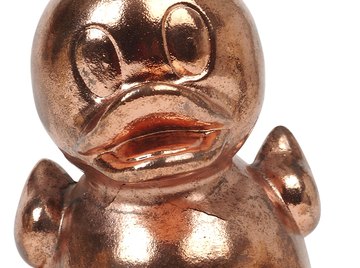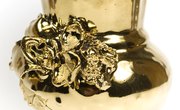
Many metals can be bonded to a surface using electrochemical processes. Bronze, like chrome and other metals, can be applied for both decorative or practical purposes. Some high-use industrial components such as springs or pistons are coated with bronze because it doesn't wear easily and creates very little friction. The principles and practices used to plate with bronze are similar whether the process is being done for industrial or aesthetic purposes.
Materials and Equipment
Bronze plating is done in a tank filled with an electrolyte solution. A rod made of the plating metal is placed in the solution. In this case, the rod would be made of bronze alloy. In addition to the bronze rod, bronze salts are dissolved in the water solution. Once the process is initiated, the bronze adheres to the object placed in the tank.
Submersion
The next step in the process is to submerge the item that the bronze plating is to go on. As long as that item is metal, it is simply placed into the solution and the plating process can begin. Nonconductive items, such as those made from plastic, must be plated using a more complicated process. Metal either needs to be introduced into the structure of the material by pitting it and then submersing it in a metallic bath, or the plating needs to be applied in a solution that deposits a layer of metal on the item without relying on electricity.
Electricity
Next, a battery is connected to the electroplating bath to create a circuit. The positive terminal on that battery is wired to the bronze rod, the anode. The negative terminal of the battery is attached to the item that you want the plating to adhere to, which is the cathode, or negative pole. This creates a complete electrical circuit that draws the metal in the bath to the object.
Plating
Once you connect the circuit to the power source, the plating process begins. The piece will usually be left in the solution for just under an hour to achieve a strong plated layer of bronze. The longer you leave the circuit completed, the thicker the resultant layer of bronze plating will be, as long as you have enough bronze in the solution. A shorter time in the bath will provide bronze-colored covering on the item, but the layer might not be thick enough to provide a practical benefit.
References
About the Author
Hans Fredrick has been busy in the online writing world since 2005. He has written on diverse topics ranging from career advice for actors to tips for motorcycle maintenance. He holds a Bachelor of Fine Arts from the University of Saskatchewan.
Photo Credits
Hemera Technologies/PhotoObjects.net/Getty Images
